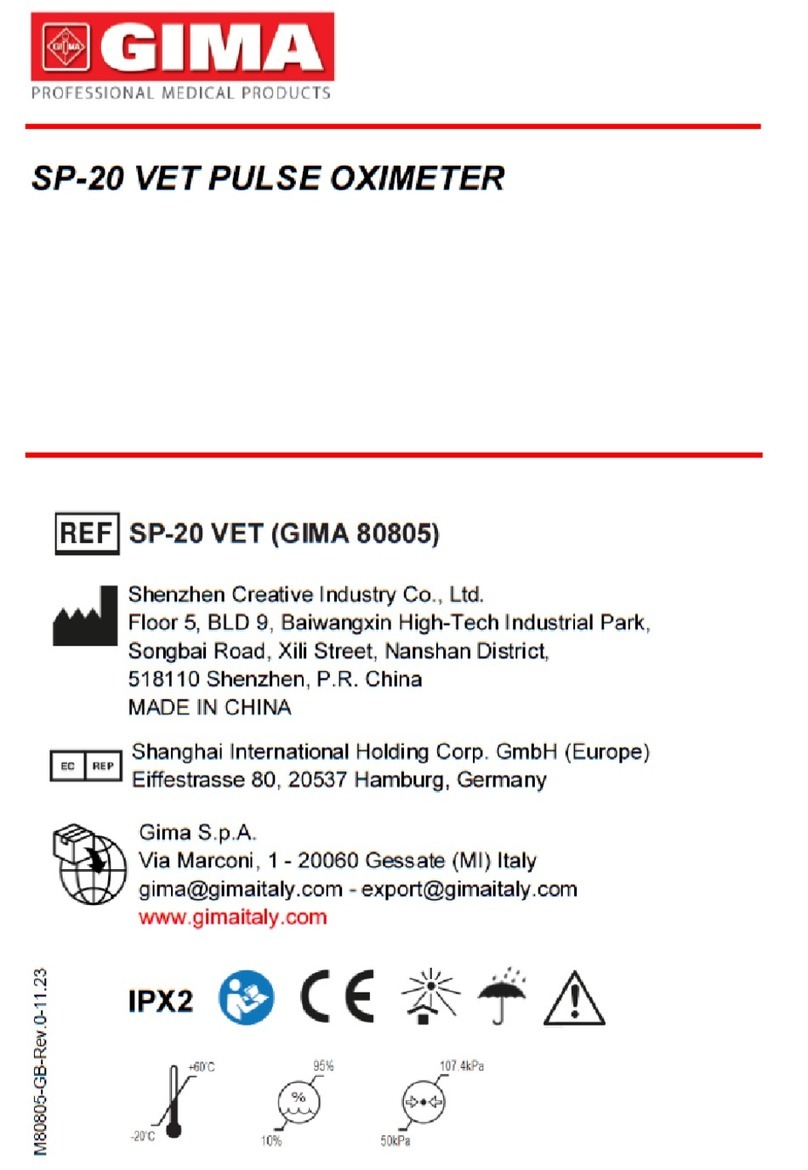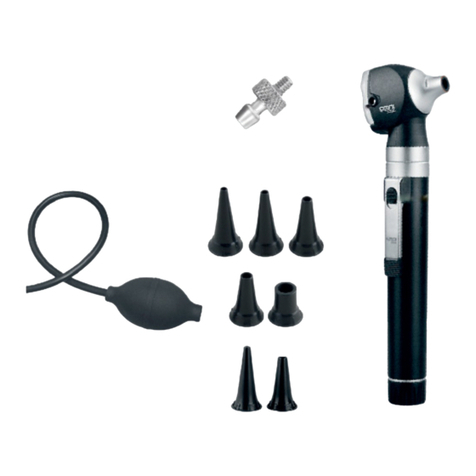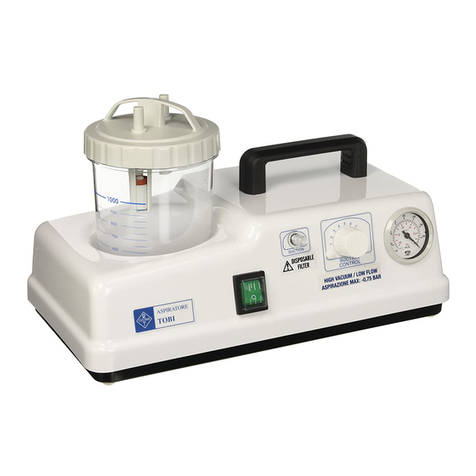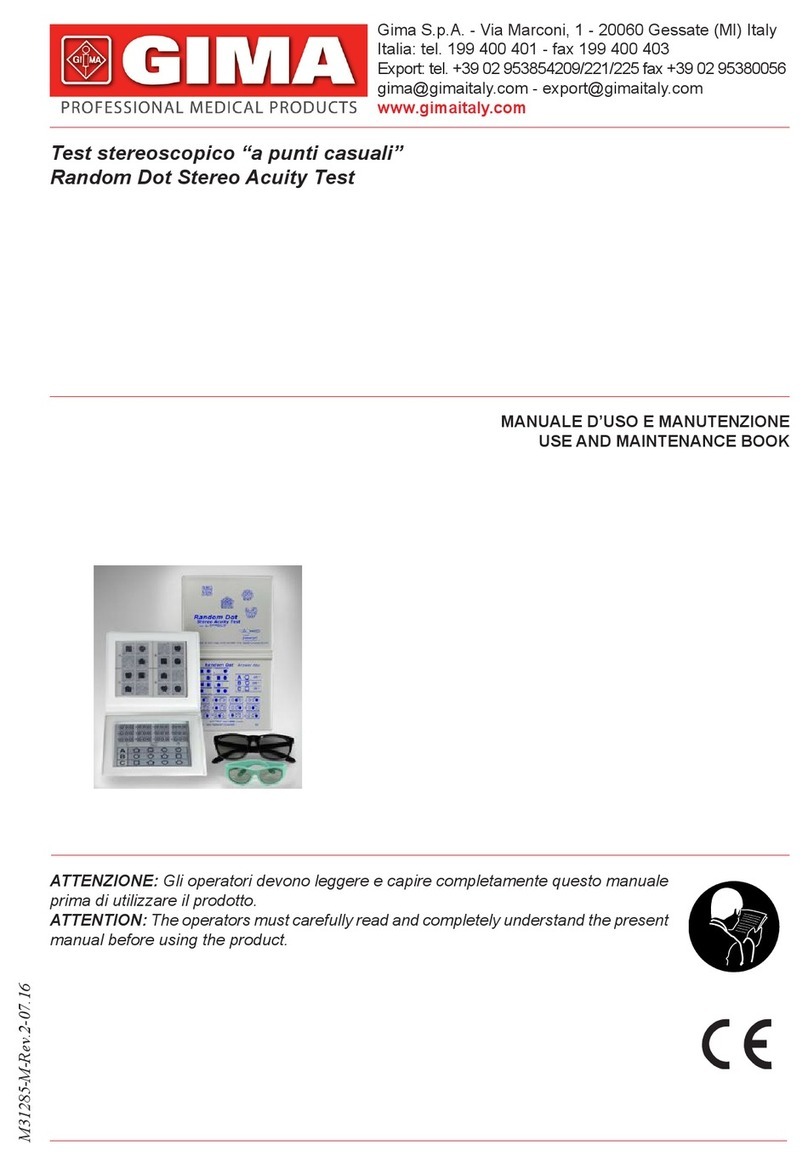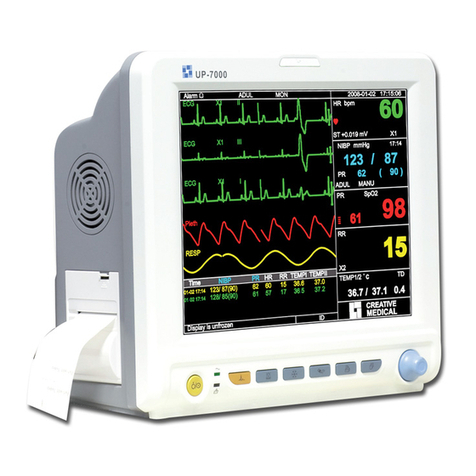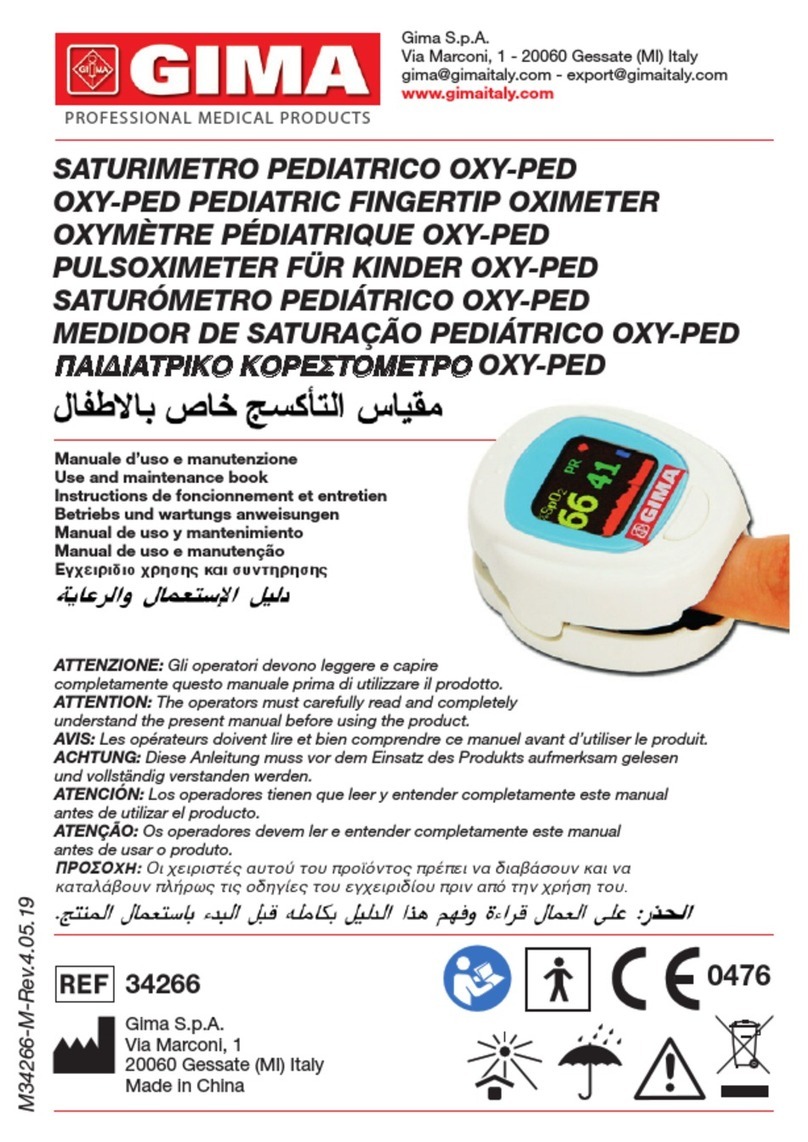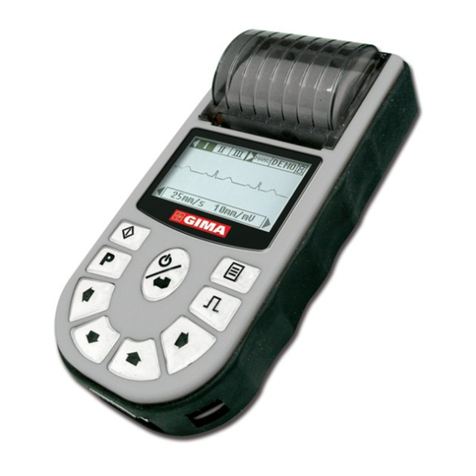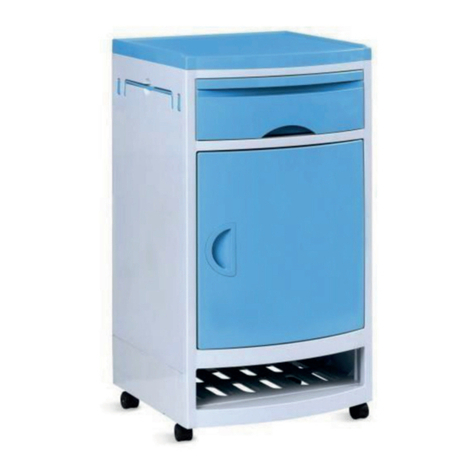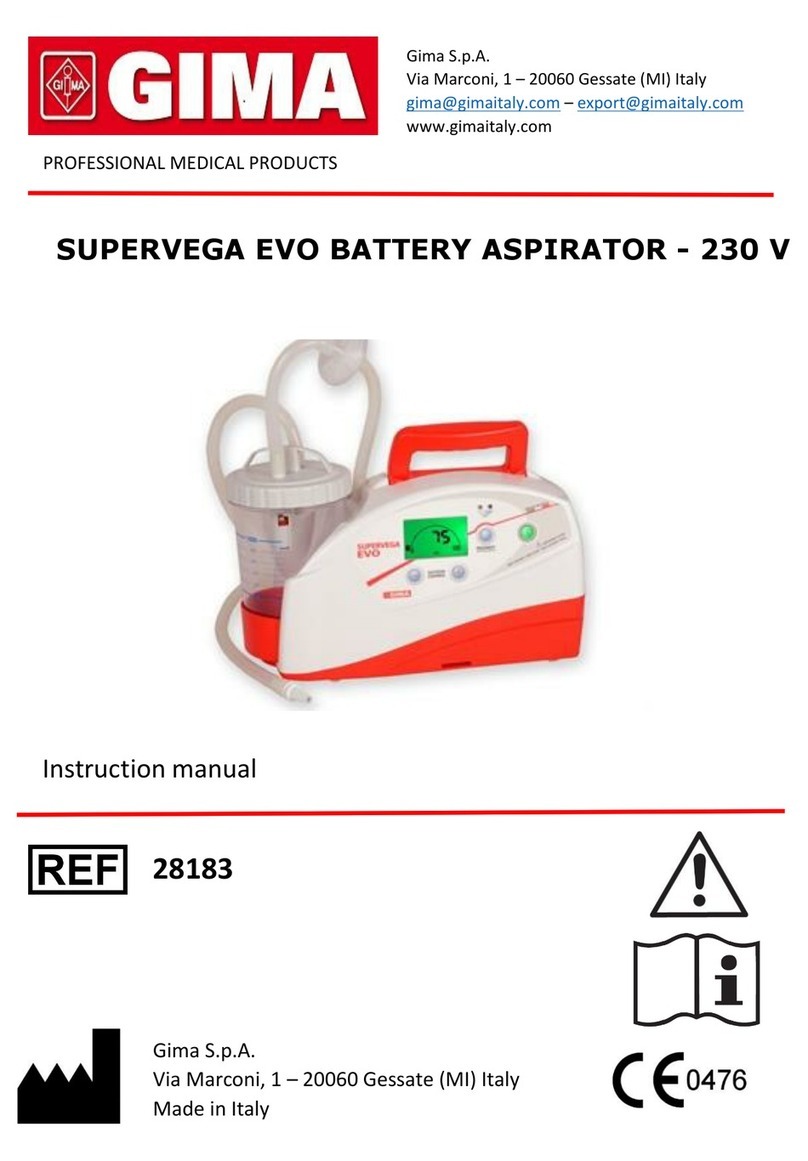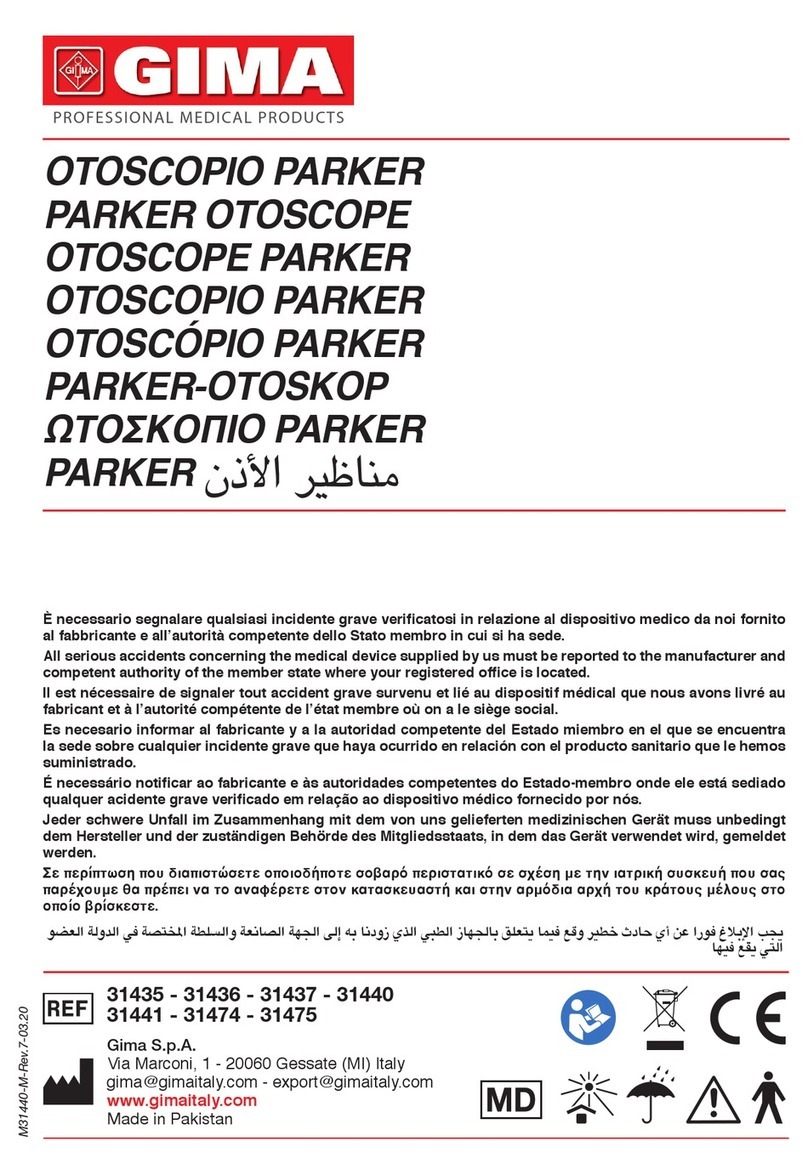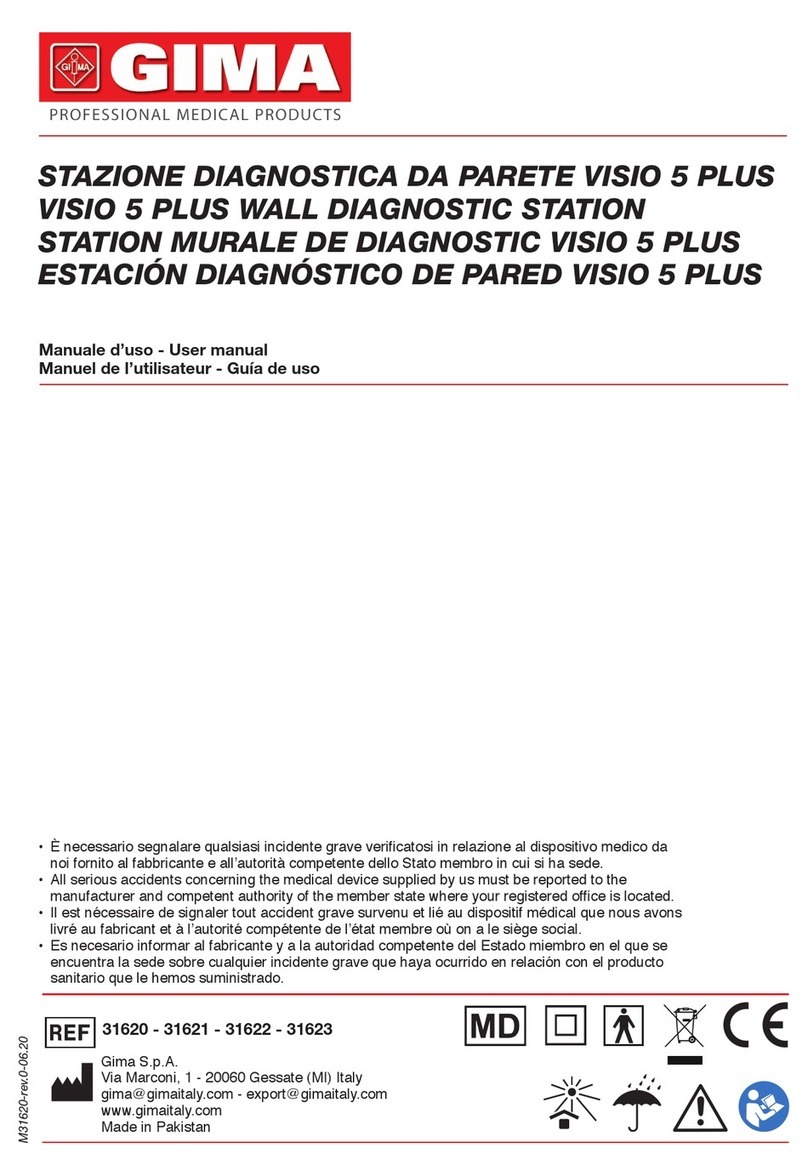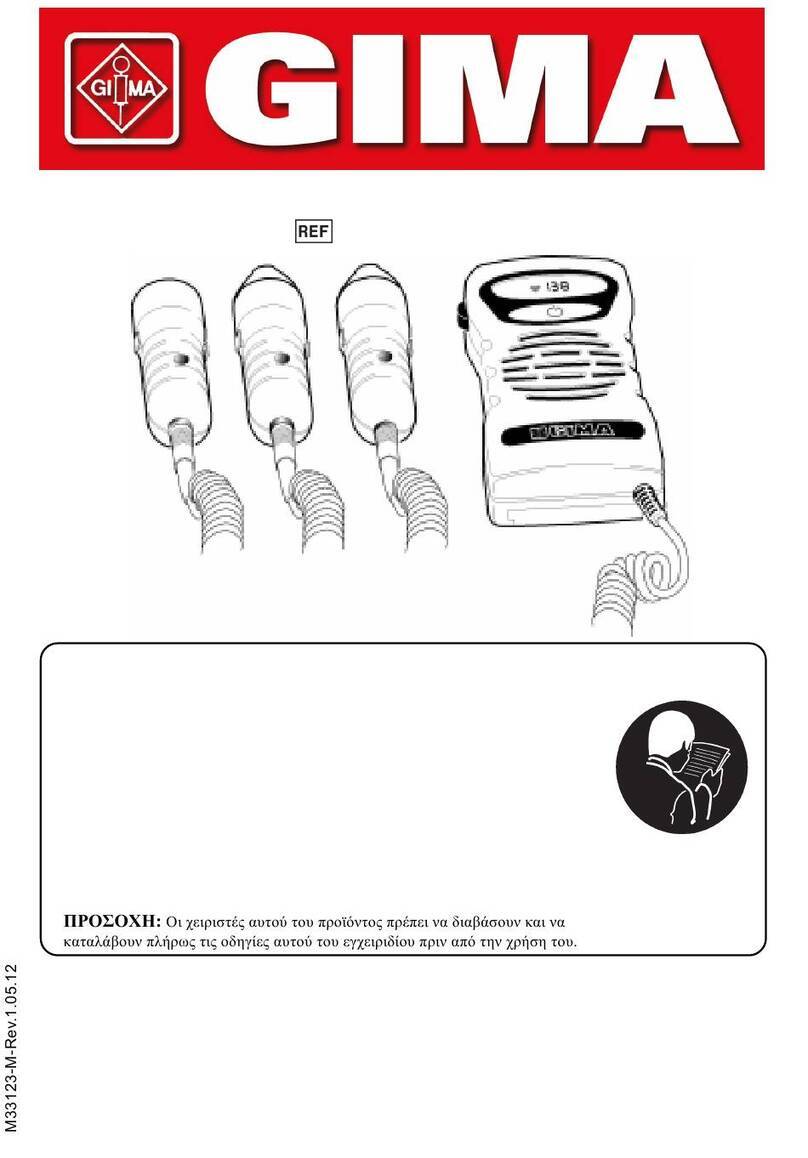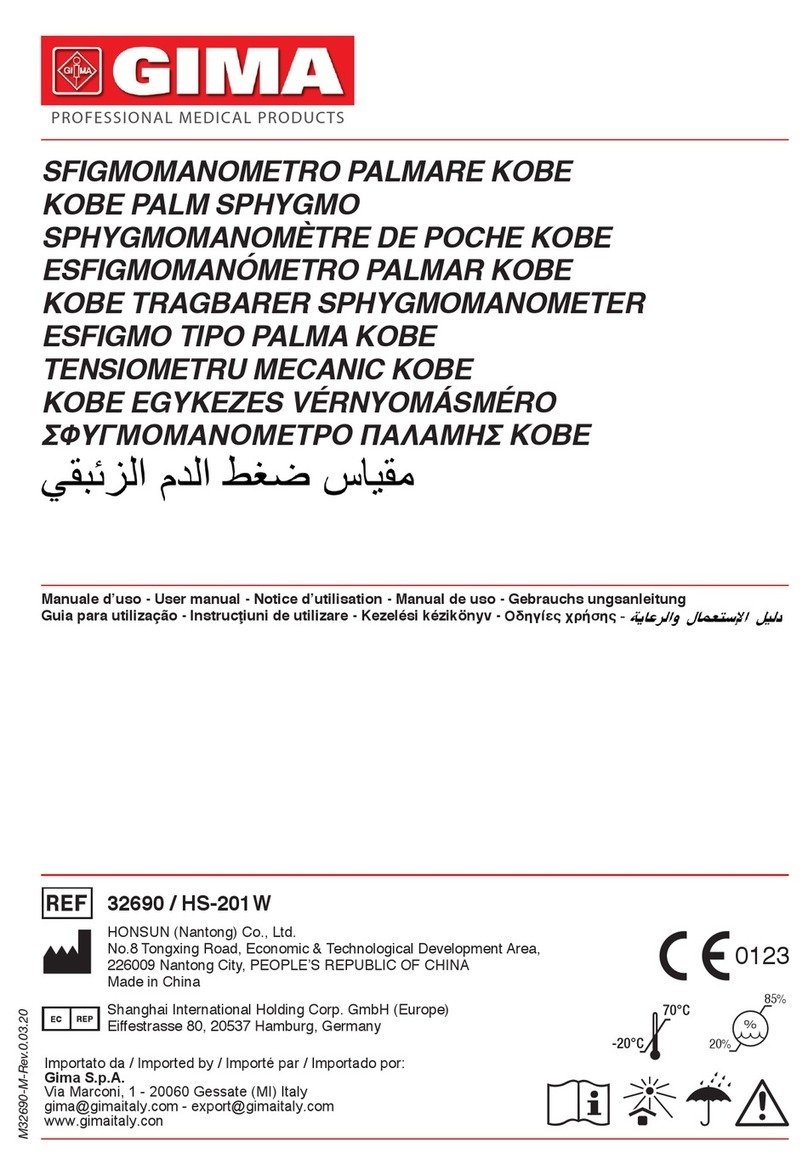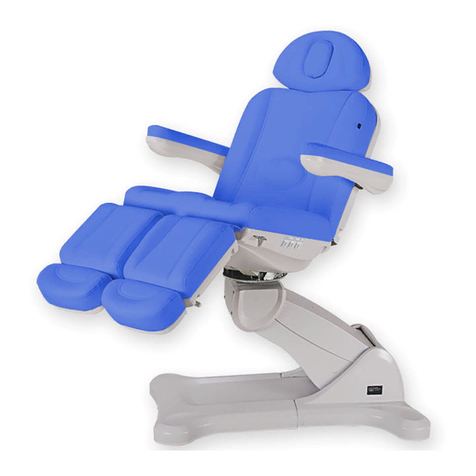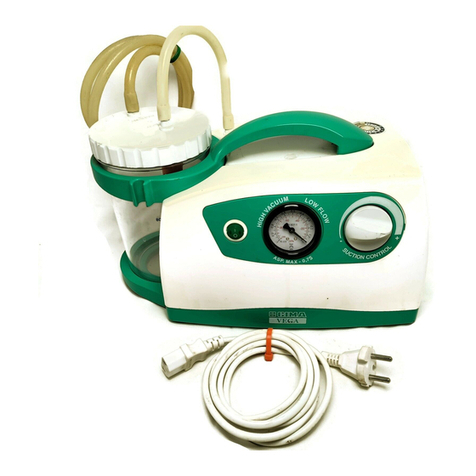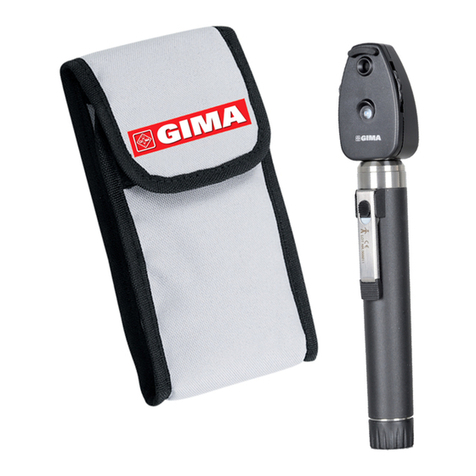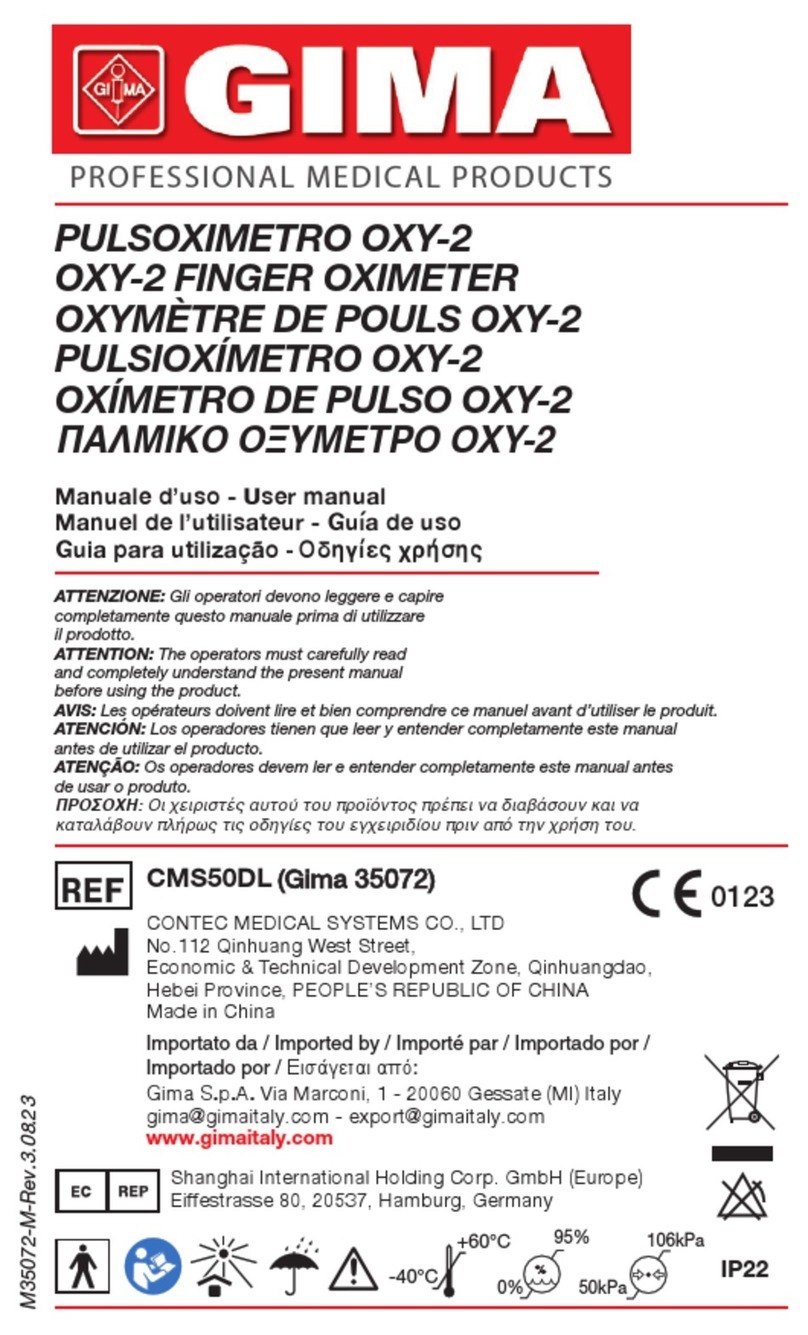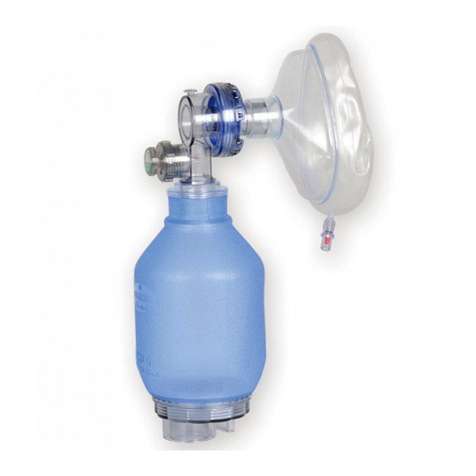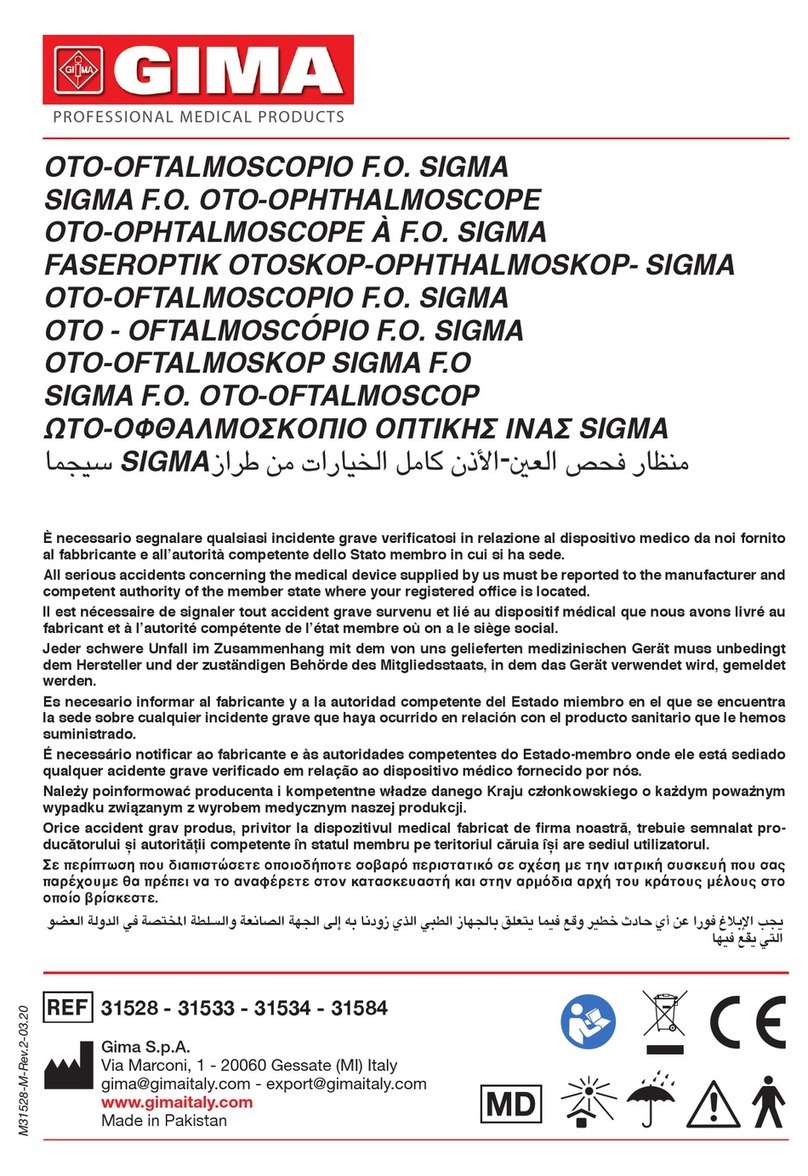
31
(PLETH) will decrease. In this case, the measurement
will be more sensitive to interference.
2. For those with a substantial amount of staining dilu-
tion drug (such as methylene blue, indigo green and
acid indigo blue), or carbon monoxide hemoglobin
(COHb), or methionine (Me+Hb) or thiosalicylic he-
moglobin, and some with icterus problem, the SpO2
determination by this monitor may be inaccurate.
3. The drugs like dopamine, procaine, prilocaine, lidocai-
ne and butacaine may also be a major factor blamed
for serious error of SpO2 measure.
4. As the SpO2 value serves as a reference value for
judgement of anemic anoxia and toxic anoxia, some
patients with serious anemia may also report good
SpO2 measurement.
4 Technical Specifications
1. Display Format: LCD Display; SpO2 Measuring
Range: 0% ~ 100%; Pulse Rate Measuring Range:
30 bpm ~ 250 bpm; Pulse Wave Display: columniation
display and the waveform display.
2. Power Requirements: 2×1.5 V AAA alkaline battery
(or using the rechargeable battery instead),adaptable
range: 2.6 V - 3.6 V.
3. Power Consumption: Smaller than 30 mA.
4. Resolution: 1% for SpO2 and 1 bpm for Pulse Rate.
5. Measurement Accuracy: ±2% in stage of 70% ~ 100%
SpO2, and meaningless when stage being smaller
than 70%. ±2 bpm during the pulse rate range of 30
bpm ~ 99 bpm and ±2% during the pulse rate range of
100 bpm ~ 250 bpm .
6. Measurement Performance in Weak Filling Condition:
SpO2 and pulse rate can be shown correctly when
pulse-lling ratio is 0.4%. SpO2 error is ±4%, pulse
rate error is ± 2 bpm during the pulse rate range of 30
bpm ~ 99 bpm and ±2% during the pulse rate range of
100 bpm ~ 250 bpm .
7. Resistance to surrounding light: The deviation betwe-
ENGLISH
